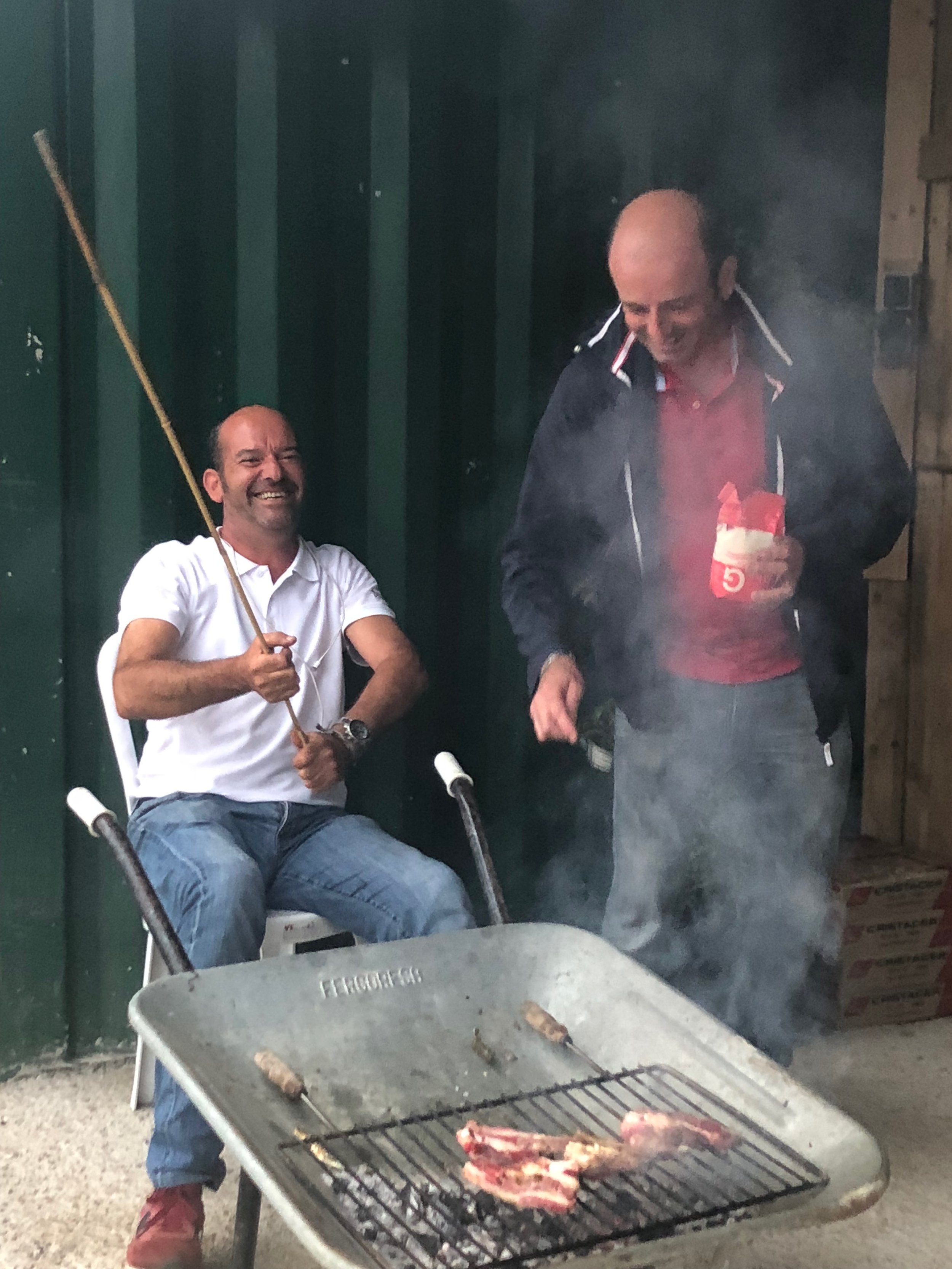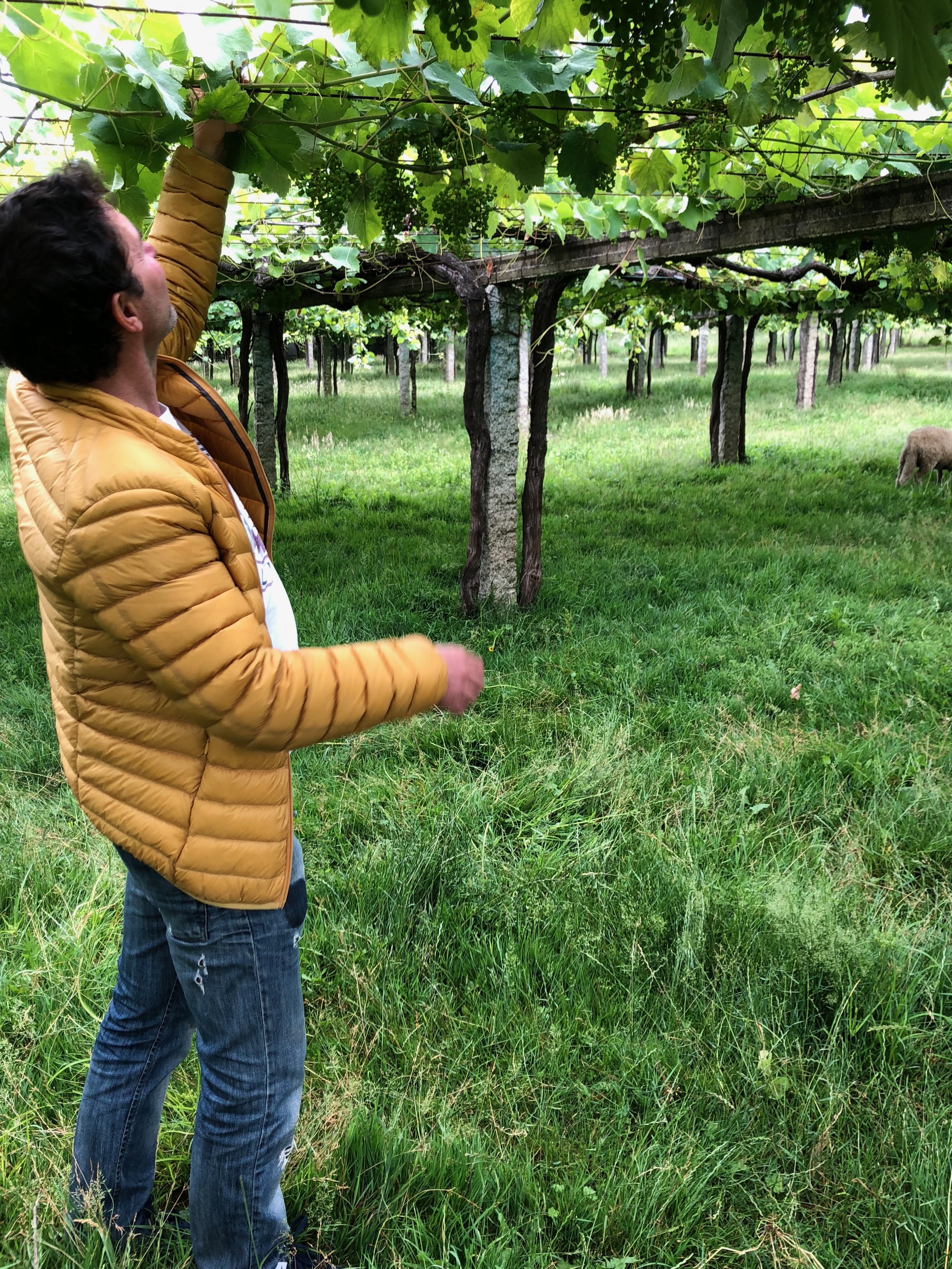The coordinates for Salnés
Rafa, Honorio and Tito, owners of Veiga Serantes in Rias Baixas, Spain.
The coordinates on the GPS did not match the address for the Veiga Serantes winery, which we had come to visit in Rías Baixas, near the western coast of Galicia, Spain. The location that Honorio, one of the owners of the vineyard, had given us to meet was placed squarely on the beach.
"Come, leave the car there" he shouts through the rain before introducing us to Tito and Rafa, the other owners of the vineyard.
Honorio points toward some ruins jutting out in the water, and explains "this construction was part of a fortress left by the Vikings in the 11th century when they invaded this part of the peninsula." The abandoned walls were crumbling yet intact on two sides, the rest weathered by thousands of years in the sea.
We had barely reflected for five seconds on the significance of this monument when Honorio has already grabbed us by the arm again -- this time, into the car to go to the winery.
Galicia has consistently endured confrontations with outside cultures. Celts, Britons, Moors, and even the Spanish Civil War have come and left their mark on this region. They have not been able, however, to erase the Galician identity.
Maybe for this reason, in the eyes of a visitor, the Galicians can appear evasive at first. Difficult to grasp or understand. His accent is complicated to decipher to foreign ears.
The main grape of the region is Albariño, which arrived in these lands precisely with the early migratory movements. Some say that it was the French Cistercian monks who, with their pilgrimage along the Way of St. James (Camino de Santiago), brought the grapes in the 12th century and taught the Galicians how to care for the vine.
Galicia is rainy yet it barely gets cold. This prevents many of the red grapes from ripening evenly, leaving the Albariño as the star of the region.
Rafa apologized to us, they had just sold the old cellar and what was today our tasting room was yesterday a chicken coop. They do not care, they're happy. This is a place for friends.
"Here we make wines with brutal honesty" says Rafa. He assures us that he knows his vines so well that he could give them each a first and last name. He says he knows very few other producers in the region who could achieve that level of detail.
Detail has been disappearing with the introduction of technology and industrial wine production here. This phenomenon began in Rías Baixas at least 20 years ago, they tell us.
As we walk through the vineyards accompanied by 19 sheep that help keep the grass level, Tito insists that his wine project is a reflection of what his grandparents did.
He uses the same techniques as his ancestors and looks for flavors that evoke those memories. To achieve this, he has concentrated his energy on conserving the local yeast. That is why the use of chemicals is prohibited.
Tito complements this point. "We are not going to compromise; this land is what my grandparents gave me and we are going to make a wine that reflects the soil, the territory and the tradition."
However, they agree that the main challenge these days is commercial pressure. Despite their commitment to the terroir, the vineyard must remain economically profitable. Still, they assure us, they will not change their style. "Here we make wines that we like to drink, because if we do not sell them, we drink them!" they say, followed by a long sip of their Albarino.
Dinner is improvised from a wheelbarrow filled with coals to roast mussels, sardines, anchovies and some meat. It is a delight that goes perfectly with the Veiga Serantes wines. As Rafa, Tito and Honorio tell their stories, laugh, and sing, the cool night falls over the Salnés village of Rias Baixas.








